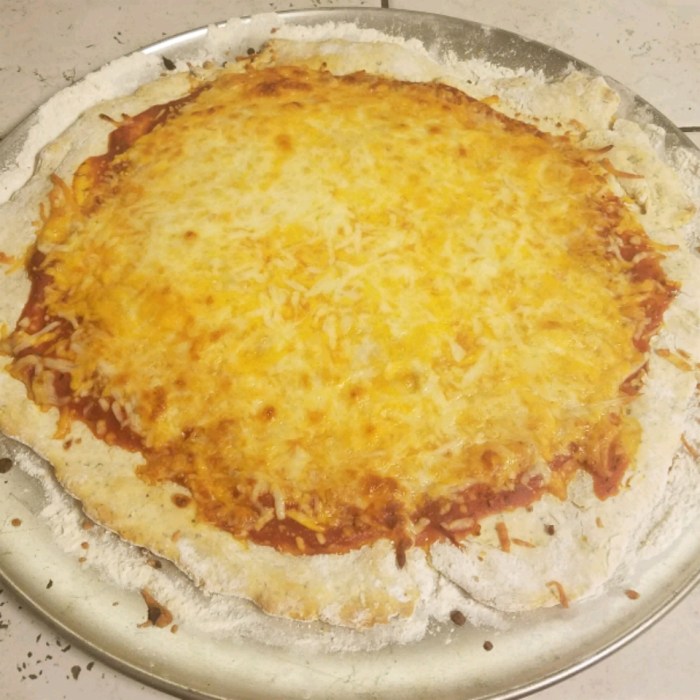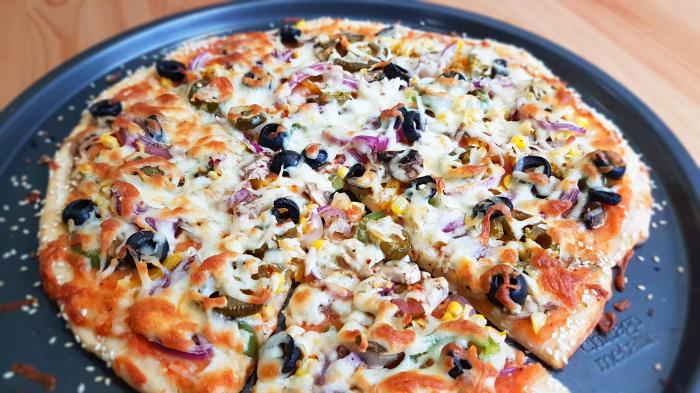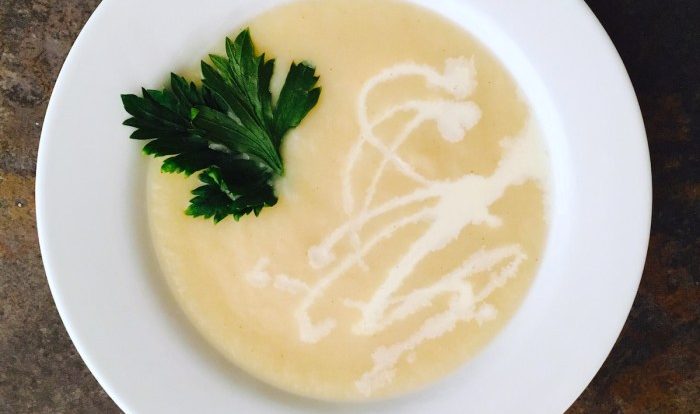Embark on a culinary adventure with “Can You Make Pizza Without Yeast,” where we unravel the secrets of crafting delectable pizzas without the use of traditional yeast. Join us as we explore alternative leavening agents, delve into the art of sourdough pizza making, and discover innovative flatbread and crust options.
Prepare to tantalize your taste buds with yeastless pizza creations that will redefine your culinary horizons.
From self-rising flour to baking powder and baking soda, we’ll guide you through the intricacies of creating a no-yeast pizza dough that rivals its yeasted counterpart. Discover the magic of sourdough starters and the unique flavors they impart to pizza dough.
And for those seeking gluten-free options, we’ll provide recipes that cater to your dietary needs.
Pizza Dough Options

Creating a delicious pizza without yeast is possible by utilizing alternative ingredients and techniques. Let’s explore the options available for crafting a flavorful crust.
Self-Rising Flour
Self-rising flour is a convenient choice for no-yeast pizza dough. It contains baking powder and salt, eliminating the need for additional leavening agents. Simply combine self-rising flour with water to form a dough.
Baking Powder and Baking Soda
For a more customized approach, you can create a no-yeast pizza dough using baking powder and baking soda. Combine all-purpose flour with baking powder, baking soda, salt, and water. This method allows you to control the amount of leavening and tailor the dough to your preferences.
Tips for Working with No-Yeast Pizza Dough
- Handle gently:No-yeast dough is more delicate than traditional yeast dough. Avoid overworking it, as this can result in a tough crust.
- Rest the dough:Allow the dough to rest for at least 30 minutes before rolling it out. This resting period allows the gluten to relax, making the dough easier to work with.
- Roll it thin:No-yeast dough is best when rolled out thin. This helps prevent a dense or gummy crust.
- Preheat the oven:Always preheat your oven to a high temperature before baking the pizza. This creates a crispy crust and prevents the dough from becoming soggy.
Leavening Agents

Leavening agents are substances that cause dough to rise and become light and airy. In pizza dough, yeast is the traditional leavening agent. However, there are several substitutes for yeast that can be used to make pizza dough without yeast.
If you’re looking for a tasty treat that’s also healthy, chocolate protein powder cookies are a great option. They’re easy to make and packed with protein, making them a perfect snack for after a workout or anytime you need a boost.
And if you’re wondering, yes, you can make pizza without yeast. There are a few different ways to do it, but one popular method is to use a sourdough starter. Sourdough is a natural leavening agent that will help your pizza dough rise and create a delicious, chewy crust.
Baking powder and baking soda are two common leavening agents that can be used in pizza dough. Baking powder is a combination of baking soda and an acid, such as cream of tartar. When baking powder is added to dough, the acid reacts with the baking soda to produce carbon dioxide gas.
This gas creates bubbles in the dough, which causes it to rise.
Baking Soda, Can you make pizza without yeast
Baking soda is a single-acting leavening agent, which means that it reacts immediately when it is added to dough. This can result in a dough that is too dense and heavy. To avoid this, baking soda should be combined with an acid, such as buttermilk or lemon juice, before it is added to the dough.
Effects of Different Leavening Agents
The type of leavening agent used in pizza dough will affect the taste and texture of the dough. Yeast-risen dough has a slightly sour flavor and a chewy texture. Baking powder-risen dough has a more neutral flavor and a lighter texture.
Baking soda-risen dough has a slightly bitter flavor and a dense texture.
Sourdough Pizza
Sourdough pizza dough is a delicious and healthy alternative to traditional pizza dough made with commercial yeast. It is made with a sourdough starter, which is a natural leavening agent that gives the dough its characteristic tangy flavor and chewy texture.To
make sourdough pizza dough, you will need to create a sourdough starter. This can be done by mixing equal parts flour and water in a jar and letting it sit at room temperature for 5-7 days. During this time, the wild yeast and bacteria in the air will colonize the mixture and begin to ferment it.
Once your starter is active, you can use it to make pizza dough.To make sourdough pizza dough, mix 1 cup of sourdough starter with 3 cups of flour and 1 cup of water. Knead the dough until it is smooth and elastic.
Let the dough rise in a warm place for 8-12 hours, or until it has doubled in size. Once the dough has risen, you can shape it into a pizza crust and top it with your favorite toppings.Sourdough pizza dough has several benefits over traditional pizza dough.
First, it is more nutritious. Sourdough fermentation breaks down the gluten in the flour, making it easier to digest. Second, sourdough pizza dough has a longer shelf life than traditional pizza dough. This is because the lactic acid produced by the fermentation process inhibits the growth of bacteria.
Finally, sourdough pizza dough has a unique flavor that is loved by many.However, there are also some challenges to using sourdough for pizza dough. First, it takes longer to make than traditional pizza dough. This is because the sourdough starter needs time to ferment.
Second, sourdough pizza dough can be more difficult to work with than traditional pizza dough. This is because it is more sticky and elastic.Overall, sourdough pizza dough is a delicious and healthy alternative to traditional pizza dough. It is more nutritious, has a longer shelf life, and has a unique flavor.
However, it does take longer to make and can be more difficult to work with.
Creating a Sourdough Starter
To create a sourdough starter, you will need:* 1 cup whole wheat flour
- 1 cup water
- A clean jar or container
Instructions:
- In a clean jar or container, mix together 1 cup of whole wheat flour and 1 cup of water.
- Cover the jar or container with a cheesecloth or paper towel and secure with a rubber band.
- Place the jar or container in a warm place (75-80 degrees Fahrenheit).
- Stir the starter once or twice a day.
- After 5-7 days, your starter should be active. You will know it is active if it is bubbly and has a sour smell.
Once your starter is active, you can use it to make sourdough pizza dough.
Flatbreads and Crust Alternatives
Flatbreads are thin, unleavened breads that can be used as a base for pizza. They are typically made with flour, water, and salt, and can be cooked in a variety of ways, including on a griddle, in a skillet, or in the oven.
Tortillas and pita bread are two types of flatbreads that can be used to make pizza. Tortillas are thin, pliable flatbreads made with corn or wheat flour. Pita bread is a pocket-style flatbread made with wheat flour. Both tortillas and pita bread can be found in most grocery stores.
To make a pizza crust using a tortilla or pita bread, simply spread your favorite pizza toppings on top of the flatbread and bake in the oven until the cheese is melted and bubbly. You can also use a pre-made pizza crust if you prefer.
Gluten-Free Pizza Crusts
If you are gluten-free, there are a number of different ways to make a pizza crust without yeast. One option is to use a gluten-free flour blend. Another option is to use a combination of almond flour and tapioca flour.
Both of these options will produce a thin, crispy crust.
Here is a recipe for a gluten-free pizza crust that does not require yeast:
- 1 cup gluten-free flour blend
- 1/2 cup almond flour
- 1/4 cup tapioca flour
- 1 teaspoon salt
- 1/2 cup water
- 1 tablespoon olive oil
Instructions:
- Preheat oven to 450 degrees F (230 degrees C).
- In a large bowl, combine the gluten-free flour blend, almond flour, tapioca flour, and salt.
- Add the water and olive oil and mix until a dough forms.
- Roll out the dough on a lightly floured surface to a 12-inch circle.
- Transfer the dough to a greased baking sheet and bake for 10-12 minutes, or until the crust is golden brown and crispy.
- Remove from the oven and top with your favorite pizza toppings.
Troubleshooting: Can You Make Pizza Without Yeast
Making pizza without yeast can be tricky, but with the right techniques and troubleshooting tips, you can create a delicious and satisfying pizza.
Here are some common problems that may arise when making pizza without yeast, along with solutions to fix them:
Too-dense dough
If your pizza dough is too dense, it may be because you did not knead it enough. Kneading helps to develop the gluten in the flour, which gives the dough its structure and elasticity. To fix this, knead the dough for at least 10 minutes, or until it becomes smooth and elastic.
Too-dry dough
If your pizza dough is too dry, it may be because you did not add enough water. To fix this, add water 1 tablespoon at a time, and knead the dough until it becomes moist and pliable.
Adjusting the recipe or technique
If you are still having trouble with your pizza dough, you may need to adjust the recipe or technique. For example, you could try using a different type of flour, such as bread flour or whole wheat flour. You could also try using a different leavening agent, such as baking powder or baking soda.
Finally, you could try changing the cooking method, such as baking the pizza in a preheated oven or on a hot grill.
Concluding Remarks
Whether you’re a seasoned pizza enthusiast or a novice seeking to expand your culinary repertoire, “Can You Make Pizza Without Yeast” is your ultimate guide to creating exceptional yeastless pizzas. With troubleshooting tips and insights into the science behind leavening agents, you’ll master the art of crafting pizzas that are both delicious and satisfying.
So, gather your ingredients, let your creativity soar, and prepare to indulge in the world of yeastless pizza delights.








